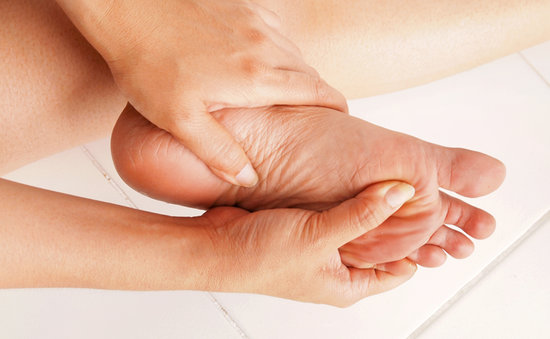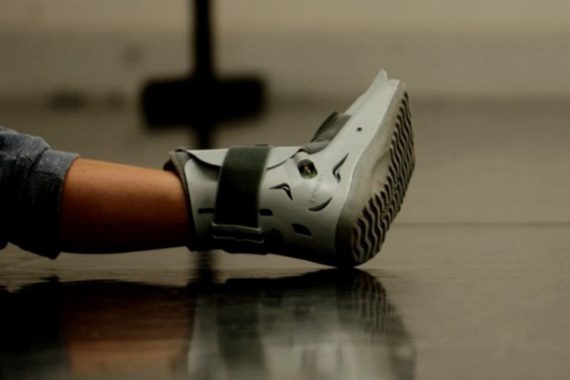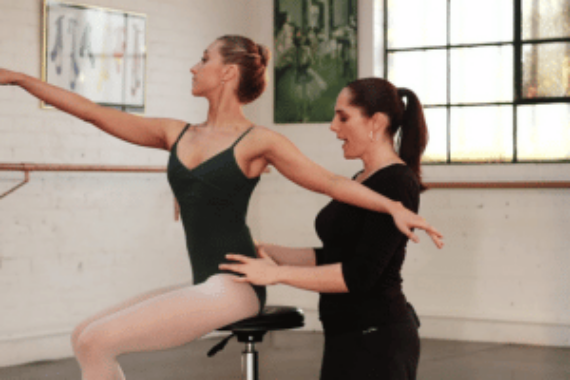Cramping in Feet and Short Calves
Many dancers complain of cramping in their feet and “short calves” interfering with their dancing. This article explains why this happens and great tips to help stop this from happening.
Lisa,
I’m so thankful for your work. I just got started on the Front Splits Fast program but can feel the effect on my body, and mind, already. I started dancing again after more than a decade of pausing. And my greatest challenge is a very tight calf. Whenever I try to do a tendu, I cramp up in my foot and it’s quite painful. I’ve been told about my shortened (?) calf muscle by several massage- and physiotherapists. But I don’t quite know what to do about it, as stretching and magnesium supplements haven’t worked for me. Please know that I generally have what you call “good feet”, with quite a good arch and a long, not super-long, top line of the shin and arched foot.
Thank you very much in advance for your answer.
Leticia
Hi Leticia, and great to hear that you are going well with the flexibility program. It is often hard work when we return to dancing after many years off, and sometimes unusual things happen in our bodies that never used to occur!
There are a couple of things that I would suggest to resolve the cramping, based on the information that you gave in your question.
Cramps often happen when a muscle is being asked to do something that it is not designed to do or is not strong enough. Dehydration, electrolyte imbalance, and a lack of mobility can also play a part, but it sounds like you have been addressing these factors already. The other things that you need to work out are:
1) Which exact muscle is cramping?
2) Which of your “Calf Muscles” is too “short”?
3) Why this is occurring and how to change the muscle firing patterns to prevent it from recurring
1) What muscle is cramping?
There are several muscles in the foot that may be cramping. If it is up in the ball of the foot, under the metatarsal arch it may be the Lumbricals, which are muscles that you do want to work, however, they may be a little weak if you have been off dancing for some time. In this case, I would suggest more of the “Doming” exercise in The Perfect Pointe Book, and gradually bringing this into your classwork.
If the cramping is deeper in the sole of the foot, it may be Quadratus Plantae, which does help to support the arch of the foot. If this is cramping in a tendu it is often due to the Tibialis Posterior not working sufficiently to engage the full plantarflexion of the ankle. Tibialis Posterior is essential to master to get full height on your demi-pointe, and effective stability with the foot fully pointed. It also helps take the load off the other calf muscles. Taping the sole of the foot to support the muscles of the arch may help in taking the load off these muscles in the short term, while you work on repatterning the foot.

2) Which exact Calf Muscle is ‘short’?
Many people say that they have “Tight Calves” or “Short Achilles”, but we need to get a little more distinction than that. I discuss the differences between Gastrocnemius and Soleus in detail in the Advanced Foot Control book. Some people have tension in both muscles, and some in just one, so try comparing your bent knee to the straight knee calf stretches in The Perfect Pointe Book to narrow it down a little. These muscles are rarely actually “shortened” but are more likely to be very tight due to overuse.
The other “calf muscle” that may be restricting your range is actually Flexor Digitorum Longus – the muscle that curls the toes. If you have a tendency to claw the toes then this muscle can develop tension that can limit you en fondu. To stretch this out, perform the Soleus stretch, with the addition of a rolled-up towel under the toes to stretch out the long tendons and isolate the muscle.
3) Why this is occurring and how to change the muscle firing patterns to prevent it from coming back
I would suspect that your calves are tight and the foot is cramping because of an imbalance in the patterning of muscles when you point your foot. The following video will show you how your foot should work in a Tendu.
I would definitely suggest working through the Advanced Foot Control program, especially the Soleus and Tibialis Posterior sections (I suspect that you are already doing regular rises for your Gastrocnemius?). Getting this patterning right really is the key to making the most of your feet!
The program also includes lots of self-treatment massage techniques that you can use to treat your own feet and calves, in between any professional treatments.
The other thing that I would look at if you have “Good feet” is the mobility of the bones in the mid-foot. If you have quite a high, but rigid arch, this can respond well to the Mid Foot Mobilisations in the program.
I hope this helps!
Kindest Regards
Lisa
Pointe Resources
If you are looking to delve deeper into this topic, check out the following programs:
- The Perfect Pointe Book: This course was originally designed to help students and dance teachers safely prepare for pointe work. The four stages of tests and exercises within the book are ideal for pre-pointe preparation classes, students close to achieving pointe shoes and students already en pointe looking for extra strength and technique training.
- Pointe Range: This online program comprises of 41 clear and concise videos, totalling just under 2 hours play time, this course begins with a series of assessments to establish exactly what structures are restricting your pointe range. It then explores a diverse array of massage techniques, joint mobility exercises and fascial mobilisers to safely improve your pointe range. This is followed by an in depth look at retraining all of the muscles that stabilise the foot and ankle to allow you to actually use your new found pointe range in class.
- Pointe Intensive: This online virtual workshop is designed for both Dance Teachers & Health Professionals working with dancers. This three day Intensive will give you the most up-to-date advice in the industry to help you understand your students’ needs, analyze their differences, and them you the tools to help your students become the best dancer they can be.




